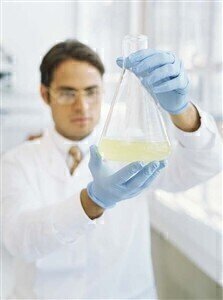News
What is the Difference Between Repeatability and Reproducibility?
Jun 27 2014
Repeatability and reproducibility are ways of measuring precision, particularly in the fields of chemistry and engineering. In general, scientists perform the same experiment several times in order to confirm their findings. These findings may show variation. In the context of an experiment,
repeatability measures the variation in measurements taken by a single instrument or person under the same conditions, while reproducibility measures whether an entire study or experiment can be reproduced in its entirety.
Within scientific write ups, reproducibility and repeatability are often reported as standard deviation. The article From Crude Mixture to Pure Compound – Automatic Purification Made Easy discusses how scientists and researchers establish repeatability and reproducibility in more detail.
What is repeatability?
Repeatability practices were introduced by scientists Bland and Altman. For repeatability to be established, the following conditions must be in place: the same location; the same measurement procedure; the same observer; the same measuring instrument, used under the same conditions; and repetition over a short period of time.
What’s known as “the repeatability coefficient” is a measurement of precision, which denotes the absolute difference between a pair of repeated test results.
What is reproducibility?
Reproducibility, on the other hand, refers to the degree of agreement between the results of experiments conducted by different individuals, at different locations, with different instruments. Put simply, it measures our ability to replicate the findings of others. Through their extensive research,
controlled inter-laboratory test programs are able to determine reproducibility. The article Precise Low Temperature Control Improves Reaction Reproducibility discusses the challenges related to reproducibility in more detail.
Why are repeatability and reproducibility considered desirable?
In terms of repeatability and reproducibility, test/re-test reliability demonstrates that scientific findings and constructs are not expected to alter over time. For instance, if you used a certain method to measure the length of an adult’s arm, and then repeated the process two years later using the same method, it’s highly likely that your results would correlate. Yet if your results differed greatly, you would probably conclude that your findings were inaccurate, leading you on to further investigations. As such, repeatability and reliability imbue investigative findings with a degree of authority.
We can also use repeatability and reliability to measure difference and a lack of correlation. If, for instance, we are unable to repeat or reproduce our findings, we have to ask ourselves why, and to investigate further.
Digital Edition
Lab Asia 32.2 April
April 2025
Chromatography Articles - Effects of small deviations in flow rate on GPC/SEC results Mass Spectrometry & Spectroscopy Articles - Waiting for the present to catch up to the future: A bette...
View all digital editions
Events
Apr 22 2025 Hammamet, Tunisia
Apr 22 2025 Kintex, South Korea
Analytica Anacon India & IndiaLabExpo
Apr 23 2025 Mumbai, India
Apr 23 2025 Moscow, Russia
Apr 24 2025 Istanbul, Turkey



















